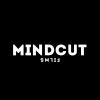Search the Community
Showing results for tags 'prores'.
-
Hello, I am new to this forum (first post) and beginner filmaker and I will need advice ... Last June I started shooting for my documentary project on the local natural heritage, for now with my own money, so my gear is rather light... I'm shooting with a Canon Eos 70D DSLR, outdoor, and i'm shooting the natural spaces of a valley (along a river). At the start I wanted to film in RAW with Magic Lantern, but with my 70D i'm stuck in 720p (for a continuous recording), so finally i've shot in a compressed way, Mpeg-4 All-I 8bit 4:2:0 @1080p 29.97fps with a picture style (EOSHD C-LOG (0,-4,-4,2)) + Vari ND Filter, hoping to get myself out of it even in post-prod ... But here the quality of the images, in a context of shooting outdoors in shaded places very contrasted (...), do not satisfy me ! So I would like to have advice to achieve a higher quality outdoor shots (natural light)? To illustrate my purpose you can see these few shots that I graded in Resolve + corrections in After Effects: https://vimeo.com/alexandrewebercom/riviereardeche The third shot is particularly ugly ... - Have I "pushed" the mpeg-4 too far by color grading it or is it simply the limitations of this compression? - How do I do with hyper contrast scenes (it was about 14h when shooting)? - Am I condemned to film in RAW whatever the chosen camera (to be able to uncork the blacks or to recover in the whites in post-prod)? - Is it better that I under-expose or over-expose this type of scene? - Can you suggest gear/ configuration more suitable for my use: Camera, Raw / Prores, Log, external recording ... ? Thanks a lot !
-
Went to Pinpoint Muay Thai and shot some test footage with the Kinefinity Terra 6K. Shot in 4K with a helios44-2 modified by vidatlantic to have oval bokeh. Hope you like it...
-
Hi all, Hoping someone can help with this edit workflow question: I currently shoot video on Canon DSLRs (in H264 MOV format), and edit on a late 2009 iMac (2.8ghz i7 processor, 16gb memory). The films I make are mainly for web rather than TV broadcast, and beyond basic colour grade / tidying up, have minimal effects added (no CGI). Until recently, I used Final Cut Pro 7, using FCP's Log & Transfer function to import and edit footage in Pro Res 422 format. Having just moved to Premiere Pro CC 2017, I'm trying to figure out the most efficient workflow with the best resulting image. Should I import and edit in native H264 MOV? Or ingest and edit as either Pro Res or DNxHD? If Pro Res or DNxHD, what's the best way to ingest (or import / transcode)? I've been reading mixed things via Google; mainly Adobe-related articles explaining a native workflow, vs various articles sponsored by transcoding software companies, saying that transcoding will have a better result. Any thoughts would be much appreciated. Thanks! Elliot
-
I recently shot a music video with the GH4(in 4k) and GH2(1080) all the footage looks really good in preview playback but I notice a Gamma change with the .mov GH4 files if I open in FCP or VLC? I've had this problem with RED files and I just continued editing with the darkened gamma change because the files seem to correct themselves upon export. With that said I have a couple questions with how I should continue with this project or if there is a better way. My workflow plan right now is to Transcode first all of AVCHD GH2 files with 5dToRGB to PRORES 422HQ After that I'll import the PRORES files into FCP and drag a clip to the timeline and match the sequence settings to the clip because the final deliverable will be in 1080. My question is with the 4k footage and if this workflow makes sense? Should I import the .mov files directly into the 1080 sequence? or should I transcode the .mov files to 4K PRORES? I know importing the .mov files will slow me down because I'll have to constantly render but I don't want to lose image quality in conversion. My concern is the gamma will change and I wont know the true image quality until after I export. I just want to keep the images looking like they are. What would be some of your workflows when working with the same type media?
-
Drop an MLV on the application and you can view the MLV with sound in real-time. Press E to encode to ProRes HQ (10-bit 422): http://www.magiclantern.fm/forum/index.php?topic=9560.0 (no GUI- all keyboard commands). I've been using ACR and AE with other workflows (mlvbrowsesharp etc.) resulting in a 175Mbit/s 10-bit 422 DNxHD file for editing. The final quality has been excellent, however the workflow was cumbersome. mlvrawviewer uses the AMaZE algorithm to deBayer with excellent results (paused and when exporting to ProRes: live playback with bilinear on GPU is also decent). While there's no Bayer sharpening or denoising options in this workflow vs ACR or Resolve 10, I am impressed with the quality and time to process files directly to ProRes HQ (tested so far on my MBP laptop- will work well for on set processing). As the 14-bit ML RAW tools improve, the 5D3 is indeed becoming a baby Alexa B). Great job everyone involved!
-
Hello, Everyone. I am debating whether to jump into the Canon 5D Mark III Raw video capture world, but as I have been researching the topic and equipment further I am now considering using Cineform as an editing codec in Final Cut 7. Up until now I have only work with ProRes, but I have read excellent things about Cineform, so I wanted to ask others what they feel about it as an editing codec. Does cineform work well in Final Cut 7? Does cineform require more computer performance in order to edit with? More RAM? RAID? Or would a RAID setup be overkill? Is there a version of cineform you really prefer to edit in? Raw? 4444? 422? Is there much visible difference between the various quality levels? Does cineform grading integrate well from cineform studio into Final Cut? These are some basic questions I have after having read about cineform a bit, so I would love to get some real world feedback on it from others. Please don't hesitate to add any additional observations you might have from your experience. Every bit of information is useful to me. Thanks so much. I look forward to your responses.
-
Hello, Everyone. I am debating whether to jump into the Canon 5D Mark III Raw video capture world, but as I have been researching the topic and equipment further I am now wondering how much data storage and backup will be necessary for larger files. With estimated calculations of Raw footage being about 7GB per minute, I wanted to ask others who are shooting Raw how much storage space are you finding you need? Terabytes seem like they would get chewed up quite quickly, so how many are people working with? 4TB? 16TB? 32TB? And for what size projects? 5min? 30min? 90min? Futhermore, data storage seems like it could vary dramatically depending on what editing format you end up converting the Raw footage into. Up till now I've only used ProRes in Final Cut, but I am also seriously entertaining cineform. It seems to have excellent feedback for a compressed file format, and would probably save space compared to ProRes, as the Raw>DNG>TIFF>ProRes conversion for editing would require a lot of intermediate files, and storage space. Finally, I also wanted to ask about computer performance when shooting Raw. Since I will probably have to invest in an external backup system to get an adequate amount of storage space, I have started to entertain using a RAID system. Do people find they need a dedicated RAID setup for editing speed now that they shoot Raw instead of H264? Or is a RAID setup really overkill at this point from a editing performance standpoint? Thanks so much. I look forward to the responses.
-
https://vimeo.com/71812380 We are very thankfull for John Brawley's first ProRes Files of the Black Magic Pocket Camera. We have decided to use Final Cut X for grading because we want to know how to get some useful pictures in a short time without using a color grading software like DaVinci. Lenses used: SLR Magic 35mm F1,4 Olympus 14-35mm F2,0 Olympus 7-14mm more info mindcutfilms.com/blog
-
- Black Magic Pocket
- ProRes
-
(and 4 more)
Tagged with:
-
BM Pocket Camera ProRes 422 files. Ungraded. Shot with using Slrmagic 35mm 1.4, 7-14 Olympus 4/3, 14-35 Olympus F2 http://fil.io/FL5kh/Footage%20from%20Blackmagic%20Pocket%20Cinema%20Camera
-
- pocket cinema
- prores
-
(and 3 more)
Tagged with:
-
Does anyone know if it's possible to create a good "recipe" for converting BMCC raw video to something similar to what the BMCC camera would create when it outputs Film Log ProRes - preferably using Adobe Camera Raw and After Effects? (I'll be using Resolve at some point, but I'm waiting for the new MacPro's to upgrade, and my 2012 Pre-Retina MacBook Pro can't handle Resolve). To be more clear: I'd like to shoot RAW, but immediately batch convert to something that closely resembles what I would get if I had shot ProRes422 Film Log. Is there such a recipe? Or does the BMCC apply something more like a changeable algorithm to create it's ProRes Log? So... what kind of curve, saturation, highlight control, shadow control, sharpening, noise reduction, etc... would you be best to use if you were willing to do a batch convert and then grade the ProRes afterward? There may not be a "one-click" solution but my current workflow is brutally slow. Thanks for any help anyone can be, -Aaron
-
http://bit.ly/13fhLis A beautiful beach wedding filmed in Long Beach Island, New Jersey. Enjoy the journey through Veronica and Bryan’s big day. This is a sneak peek of the event. Camera: Blackmagic Cinema Camera 2.5K (Shot in Prores, Video) GoPro Hero 3 Black Edition Lenses: Canon 16-35mm 2.8L Canon 24-70mm 2.8L Nikkor Ai-s 85mm 1.8 Audio: Zoom H1 Software: Premiere Pro CS6 After Effects CS6 DaVinci Resolve Song: A Beautiful Place to Be Artist: Tyrone Wells SongFreedom.com
-
- cinematography
- bmcc
-
(and 4 more)
Tagged with:
-
This is a little trick I figured out recently to automatically convert my AVCHD files to ProRes just by dropping them into a folder. It's works by using Folder Actions in OSX to launch an ridiculously simple Automator script. Now, since I think Mountain Lion is the first version of OSX to include the ability to natively play AVCHD files, this my not work on older versions of OSX. Please let me know below if this works in older version. Here's the step by step instructions: [b][i]I've updated this to reflect the "Actual" way to do this instead of the old one that was botched due to faulty memory. My apologies to those who muddled through the original with no results.[/i][/b] 1.) we need to create a folder for us to use as the drop convert folder. It doesn't matter where the folder is as long as it's easy to get to. One option is to put it just about anywhere and then drag a link into the "Favorites" list in a finder window. That way it will always be easily accessible from the finder. Another option is just to leave it on the Desktop. whatever you choose create a folder now. I called mine, "Convert" but you can call it whatever you want. [img]http://www.eoshd.com/comments/uploads/inline/20711/5094e679513d2_Automator.jpg[/img] 2.) Now Launch the "Automator" App located in your Applications folder. Once it opens you be presented with a screen asking you to "Choose a type for your document". Choose "[b][i]Folder Action[/i][/b]". 3.) at the top of the workflow window, you'll see a drop down menu that says, "[i]Choose folder[/i]". Click on it and pick "Other" and then locate the folder folder you just created. Now anything we do will be applied to that folder. 4.) in the left hand column you see a Library of main tasks that can be automated. Click on the "Files & Folders" entry and then just to the right you'll see a list of actions. Drag and drop "Get Selected Finder Items" into the workflow window. A bar at the top will appear with the same name just under the folder chooser. 5.) Now click on "Movies" in the main Library list and you'll see the window change to show you some more actions related to movies. Drag and drop the "Encode Media" action into the workflow window just below the "Get Selected Finder Items" action. You'll see that one automatically flows into the next so you can easily see how other things can be automated pretty easily here too. You can even make this script more and more complex if you need; moving items to specific folders and coping or backing up footage files. We're just going to keep this simple though. 6.) In the Encode Media action change the "Setting" Property to "Apple ProRes". This Automatically changes to ProRes 422 with uncompressed audio which is fine for most of our needs. If you need ProRes HQ or 4444 or something else, then this workflow probably isn't for you. [img]http://www.eoshd.com/comments/uploads/inline/20711/5094e4f8596f5_workflow.jpg[/img] 7.) Now, save this as "Convert2ProRes" or whatever you find appropriate. Since this is a Folder Action, it doesn't ask you were to save it. That's all there is to it. Now, you can just navigate to your "STREAM" folder on your card and drag and drop the .MTS files on the "Convert" folder and away it goes. Pretty soon you hear your fan running and you see this little icon up in the menu bar. [img]http://www.eoshd.com/comments/uploads/inline/20711/5094e661ec27a_workflow_Icon.jpg[/img] As soon as it's done, the icon will disappear and you'll see all your files have been converted to Apple ProRes quicktime movies. Yay!





